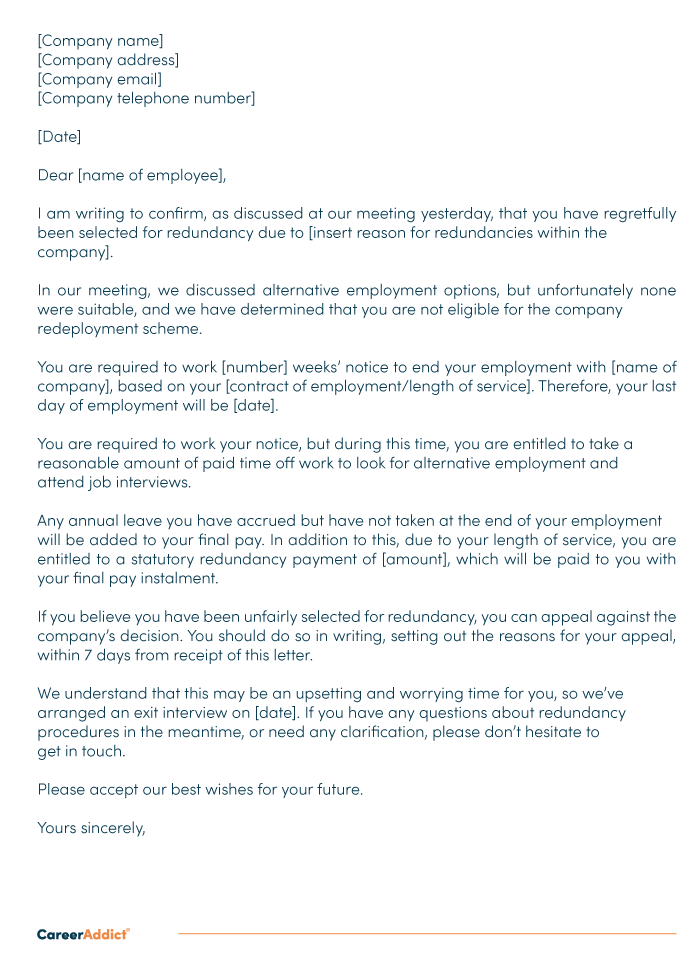If a Company Goes Bust Who Pays Redundancy? Legal Insights for UK Worker
If a Company Goes Bust Who Pays Redundancy? Legal Insights for UK Worker
Blog Article
Investigating the Interaction Between Firm Redundancy and Business Versatility for Future Growth
In the vibrant landscape of today's business globe, the elaborate partnership in between firm redundancy and organizational adaptability arises as an essential variable for sustained development and success. Companies usually encounter the difficulty of striking a delicate balance in between maintaining a degree of redundancy to mitigate dangers and cultivating adaptability to react swiftly to the ever-evolving market needs. This fragile interaction holds the crucial to not only surviving in unstable times but additionally flourishing despite uncertainty. As we check out the complex measurements of this interplay, appealing understandings into exactly how companies browse these complexities to pave the means for future growth await.
Importance of Business Redundancy
Firm redundancy is an important element that improves organizational durability and mitigates operational dangers. By including redundancy steps within the organizational structure, firms can much better endure unanticipated disturbances and fluctuations in business atmosphere. Redundancy acts as a critical barrier, permitting business to adapt and respond successfully to unforeseen difficulties without compromising important operations.
One key aspect of the relevance of firm redundancy is its duty in making sure connection during times of crisis. When faced with sudden adjustments or emergency situations, repetitive systems, resources, or workers can step in to maintain essential features and protect against extensive interruptions. This continuity not just safeguards the business's online reputation and consumer trust fund yet likewise reduces financial losses and operational downtime.

Methods for Business Flexibility

Producing versatile business frameworks that enable for fast modifications to market dynamics and client requirements is vital for remaining affordable in a rapidly evolving setting. By visit their website proactively recognizing prospective interruptions and opportunities, companies can proactively adjust and prosper in an ever-changing service landscape.
Balancing Redundancy and Adaptability
Attaining an unified equilibrium in between functional redundancy and organizational flexibility is extremely important in navigating the complexities of a vibrant company environment. Redundancy within a firm offers a safety web, making certain connection and stability in procedures. Nevertheless, an excess of redundancy can lead to inefficiencies and impede versatility to changing market conditions. On the other hand, organizational adaptability enables companies to react without delay to external disruptions and take new chances. Striking the right equilibrium in between redundancy and versatility is a fragile process that needs a deep understanding of the company's goals, market characteristics, and danger resistance.
To attain this equilibrium, firms require to perform regular assessments of their operations to determine areas where redundancy is required for danger reduction and where versatility can drive technology and development. Implementing flexible structures, fostering a culture of continuous discovering and enhancement, and motivating open communication across all levels of the organization are essential strategies to harmonize redundancy and adaptability effectively. By straightening these 2 important aspects, business can position themselves for sustainable development and success in an ever-changing organization landscape.
Instance Researches on Adjustment Success
In checking out instances of successful organizational Look At This adaptation, it ends up being noticeable that the interplay between operational redundancy and versatility is a specifying variable in forming resilient services. A DVD rental solution, Netflix demonstrated exceptional flexibility by transitioning right into a streaming system when digitalization interfered with the industry. These situation researches emphasize the significance of functional redundancy paired with business adaptability in fostering long-lasting development and competition.
Building Resilience for Future Growth
Structure durability for future growth needs a calculated positioning of operational processes with market dynamics and arising fads. Firms need to adjust to altering environments by fostering a society of adaptability, technology, and continual enhancement. Durability involves not just jumping back from obstacles however also proactively preparing for future obstacles. One crucial element of building strength is buying robust threat administration techniques to reduce possible disturbances. This includes scenario preparation, expanding supply chains, and establishing backup plans for numerous backups (who pays redundancy money).
In addition, fostering solid relationships with stakeholders, such as consumers, employees, vendors, and the community, is essential for preserving and weathering unpredictabilities depend on and assistance during stormy times. Effective interaction and openness play an important duty in building durability, as they aid align expectations and promote collaboration in browsing uncertainties.
Moreover, companies need to focus on learning and development efforts to upskill staff members and equip them with the go to this website needed devices to adapt to changing scenarios. By buying their workforce, companies can boost their flexibility and dexterity, ultimately enhancing their durability for lasting future development.
Conclusion

In the dynamic landscape of today's organization world, the intricate connection in between company redundancy and business adaptability arises as an essential variable for sustained development and success. Firms commonly face the challenge of striking a fragile equilibrium between preserving a degree of redundancy to minimize dangers and fostering flexibility to respond quickly to the ever-evolving market needs.To attain this balance, business need to perform normal assessments of their operations to determine locations where redundancy is necessary for risk mitigation and where versatility can drive technology and development.In conclusion, the interplay between business redundancy and organizational versatility is critical for future growth. Building resilience through a combination of redundancy and versatility will make sure that firms are prepared for the obstacles of the future.
Report this page